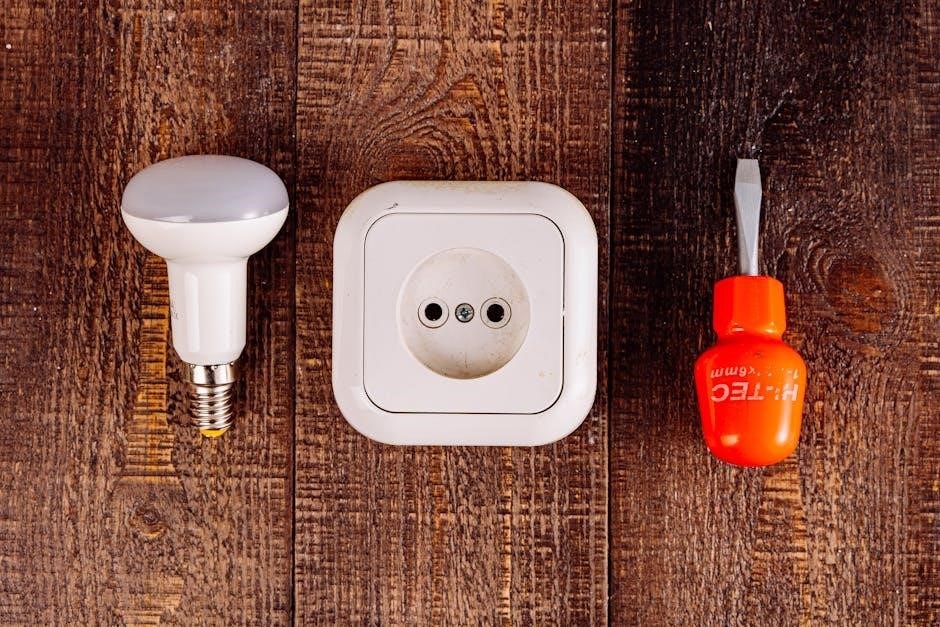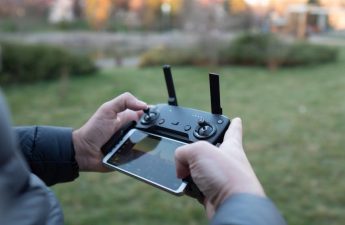This manual provides essential guidelines for maintaining the Cessna 172P, ensuring safety and efficiency. It covers routine inspections, troubleshooting, and compliance with aviation standards.
1.1 Overview of the Cessna 172P Aircraft
The Cessna 172P is a single-engine, high-wing aircraft renowned for its reliability and versatility. Designed for flight training and personal use, it features a Lycoming O-320-H2AD engine, delivering 180 horsepower. With a cruising speed of 122 knots and a range of approximately 640 nautical miles, the 172P is a popular choice for pilots worldwide. Its durable construction and intuitive handling make it ideal for both novice and experienced aviators, ensuring safe and efficient flight operations.
1.2 Importance of Regular Maintenance
Regular maintenance is crucial for ensuring the safety, performance, and longevity of the Cessna 172P. It prevents minor issues from escalating into major problems, reducing downtime and operational costs. Proper upkeep also ensures compliance with aviation regulations, maintaining airworthiness and reliability. By following the manual’s guidelines, pilots and mechanics can identify potential faults early, ensuring the aircraft remains in optimal condition for flight. Adhering to a consistent maintenance schedule is essential for upholding safety standards and maximizing the aircraft’s efficiency.
1.3 Structure and Content of the Manual
The Cessna 172P maintenance manual is organized into comprehensive sections, covering all aspects of aircraft upkeep. It includes detailed procedures for inspections, repairs, and replacements, ensuring clarity and accessibility. The manual begins with introductory information, followed by specific chapters on systems like engine, propeller, and avionics. Each section provides step-by-step guidance, supported by diagrams and reference materials. Regular updates and revisions are noted, ensuring compliance with the latest aviation standards. This structured approach helps users efficiently locate and apply maintenance procedures, promoting safety and operational excellence.
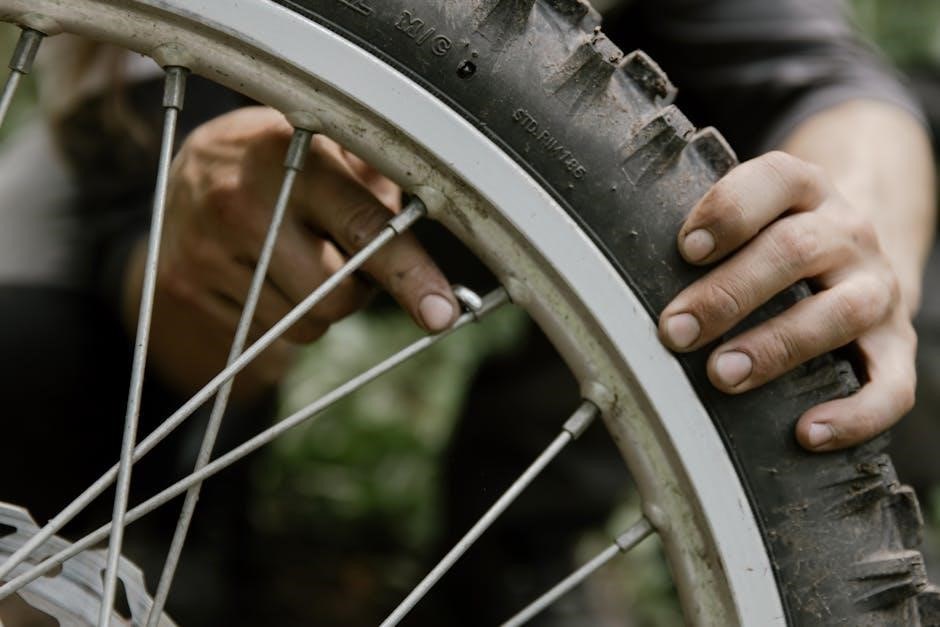
Pre-Flight and Post-Flight Inspections
Pre-flight checks ensure the aircraft is airworthy, covering controls, fuel, and instruments. Post-flight inspections verify proper shutdown and prepare for future flights, maintaining safety and efficiency.
2.1 Daily Inspection Checklist
The daily inspection ensures the Cessna 172P is airworthy, covering critical systems. Check flight controls for freedom and correctness, fuel for quantity and quality, and tires for condition. Verify all instruments are functioning properly, including navigation and communication systems. Inspect the aircraft for damage or wear, and ensure the parking brake is set. Review the aircraft logbooks for compliance with maintenance requirements. Reference the POH for specific pre-flight checks, such as elevator trim and oil levels, ensuring everything is within operational limits. This routine is vital for safe and efficient flight operations.
2.2 Pre-Flight Safety Checks
Pre-flight safety checks are critical to ensure the Cessna 172P is ready for flight. Begin with the engine: set the throttle to idle, mixture to rich, and check magnetos for proper operation. Verify the fuel selector is on “BOTH” and ensure no fuel leaks. Check flight controls for freedom of movement and proper locking. Inspect tires, brakes, and landing gear for damage or wear. Ensure all instruments, including GPS and navigation systems, are functioning correctly. Review the aircraft logbook for compliance with maintenance requirements. Adhere to the POH for detailed procedures to ensure a safe and efficient flight.
2.3 Post-Flight Procedures
Post-flight procedures ensure the Cessna 172P is secured and prepared for storage. Engage the parking brake, set tie-downs, and chock the wheels. Conduct a visual inspection for damage or fluid leaks. Lock the propeller and control surfaces to prevent movement. Drain fuel samples and set the fuel selector to “OFF.” Disconnect the battery to conserve power. Record flight details in the logbook. Refer to the POH for specific post-flight tasks to maintain safety and readiness for the next operation.
Engine Maintenance
Regular engine maintenance ensures optimal performance and longevity. This includes routine inspections, oil analysis, compression checks, and addressing any anomalies promptly to prevent potential issues.
3.1 Oil Change Intervals and Procedures
The Cessna 172P maintenance manual specifies that oil changes should occur every 50 hours of flight time. Use approved oils, such as Shell W 100 Plus, to ensure engine compatibility. Drain the old oil carefully, inspect the filter for debris, and replace it with a new one. Refill the engine with the recommended quantity of fresh oil and document the service in the maintenance log. Always follow proper safety and environmental procedures for disposing of used oil and filters.
3.2 Spark Plug Replacement and Inspection
Spark plugs in the Cessna 172P should be inspected every 100 hours of operation and replaced as needed. Remove the spark plugs using a socket wrench, inspecting for wear, fouling, or excessive gap. Clean or replace plugs as required, ensuring the gap is set to 0.028-0.032 inches. Use a gap gauge for accuracy. Install new plugs with a thin layer of anti-seize compound and torque to 15-20 ft-lbs. Document the replacement in the maintenance log to maintain compliance with FAA standards and ensure optimal engine performance.
3.4 Fuel System Maintenance
Regular fuel system maintenance is critical for the Cessna 172P to ensure safe and efficient operation. Inspect fuel tanks for leaks, corrosion, or contaminants, and clean or replace them as needed. Check the fuel selector valve for proper operation, ensuring it switches smoothly between tanks. Verify fuel line connections are secure and free from damage. Use a fuel strainer to detect contaminants during pre-flight inspections. Always consult the engine manufacturer’s manual for recommended fuel types and additives. Document all maintenance activities to maintain compliance with FAA regulations and ensure optimal fuel system performance.
Propeller and Landing Gear Maintenance
Inspect propeller for damage, ensure proper pitch adjustment, and lubricate landing gear components. Regular checks prevent wear and ensure safe, efficient aircraft operation.
4.1 Propeller Inspection and Pitch Adjustment
Inspect the propeller for damage, nicks, or excessive wear. Check blade alignment and tighten bolts if necessary. Pitch adjustment ensures optimal performance and efficiency. Lubricate the propeller hub regularly. Refer to the manual for specific torque values and adjustment procedures. Inspect the spinner for proper fit and damage. Perform these checks during routine maintenance to ensure smooth operation. Address any issues promptly to avoid vibration or performance loss. Always follow FAA guidelines and manufacturer recommendations for propeller maintenance.
4.2 Landing Gear Lubrication and Inspection
Lubricate the landing gear components, including pivot pins and bushings, every 50 hours of flight time. Inspect for wear, corrosion, or damage. Check tire pressure and tread depth, ensuring proper inflation. Look for leaks in hydraulic lines and brake cylinders. Tighten all bolts and nuts to specified torque values. Replace worn or damaged parts immediately. Clean and grease all moving parts to prevent corrosion. Follow the manual’s interval schedule for routine maintenance. Ensure compliance with FAA standards for safety and airworthiness.
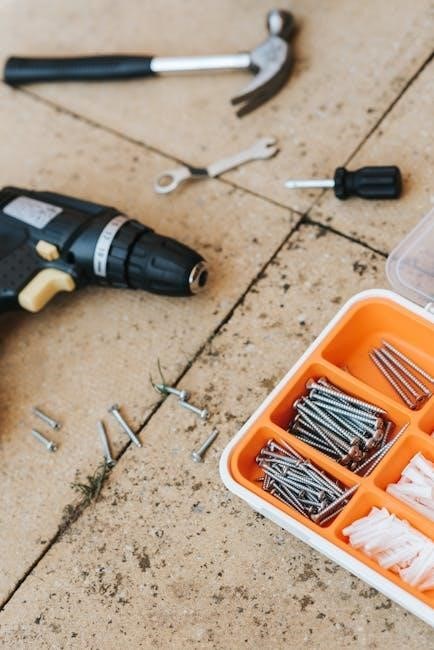
Electrical and Avionics Systems
Regularly inspect and test the battery, avionics, and electrical systems. Ensure proper wiring connections, circuit breaker functionality, and system performance. Replace faulty components promptly to maintain reliability and safety.
5.1 Battery Maintenance and Testing
Regularly inspect the battery terminals for corrosion and secure connections. Check electrolyte levels and charge status. Perform load testing to ensure proper function. Replace the battery every 5-7 years or as recommended. Always disconnect the battery before testing or maintenance. Use approved chargers and follow the manual’s guidelines for optimal performance and safety. Proper battery maintenance is crucial for reliable engine starts and electrical system operation.
5.2 Avionics System Checks
Perform regular checks on all avionics systems to ensure proper functionality. Test communication and navigation equipment, including GPS and instrument panels. Verify antenna connections and power switches. Check circuit breakers and fuses for tripped or blown conditions. Calibrate instruments as needed and update software periodically. Inspect wiring and connectors for damage or corrosion. Ensure all systems comply with FAA standards and perform ground and flight tests as recommended in the manual. Proper avionics maintenance is critical for safe and efficient flight operations.
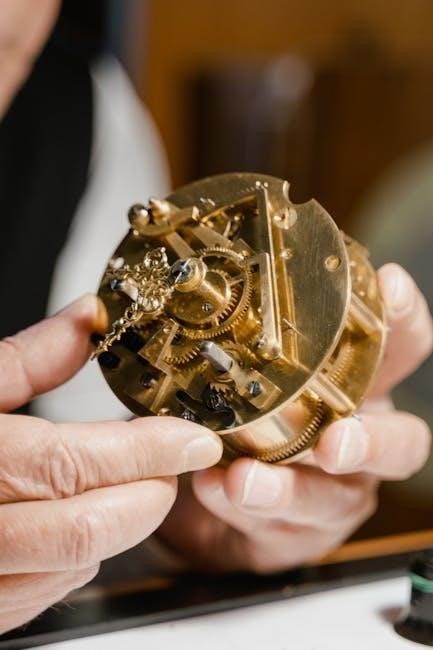
Hydraulic and Braking Systems
Regularly inspect the hydraulic system for leaks and proper fluid levels. Check the brakes for wear and ensure all components function correctly. Maintain system integrity.
6.1 Brake System Inspection and Maintenance
Inspect the brake system for wear on pads and rotors. Check for fluid leaks and ensure the parking brake functions correctly. Measure pad thickness and replace if worn below limits. Test brake effectiveness during taxi. Refer to the POH for specific maintenance intervals and procedures. Ensure all hydraulic connections are secure and free from damage. Maintain proper brake fluid levels as outlined in the maintenance manual. Regularly clean and lubricate braking components to prevent corrosion and ensure smooth operation. Adhere to scheduled maintenance to guarantee optimal braking performance and safety.
6.2 Hydraulic Fluid Levels and Condition
Regularly check the hydraulic fluid levels using the dipstick or sight gauge, ensuring they meet the manual’s specifications. Inspect for leaks around reservoirs, lines, and cylinders. Verify fluid viscosity matches the recommended type for temperature conditions. Look for contamination or discoloration, which may indicate system issues. Test fluid for degradation or moisture content. Replace fluid and filters as per the maintenance schedule. Avoid overfilling, as it can lead to system pressure imbalances. Always follow the manual’s guidelines for hydraulic system maintenance to ensure optimal performance and safety.
Airframe and Control Surfaces
The airframe and control surfaces require regular inspection for damage, wear, or misalignment. Ensure all rivets, bolts, and hinges are secure and functioning properly. Address any issues promptly to maintain structural integrity and flight safety.
7.1 Inspection of Control Surfaces
Regular inspection of control surfaces, including ailerons, elevators, and rudder, is critical for maintaining flight safety. Check for damage, proper alignment, and secure attachment points. Ensure all hinges and brackets are tightly fastened and free from corrosion.
Examine surfaces for signs of wear, dents, or delamination. Verify that control cables are properly connected and move freely without binding. Reference the maintenance manual for specific inspection criteria and procedures to ensure compliance and optimal aircraft performance.
7.2 Rivet and Bolt Torque Checks
Rivet and bolt torque checks are vital for ensuring structural integrity. Use a torque wrench to verify specifications, as outlined in the manual. Inspect for wear, corrosion, or looseness. Retighten as needed, following recommended torque values. Ensure all fasteners are secure to prevent vibration or stress-related failures. Regular checks during maintenance intervals help maintain airworthiness and safety. Always refer to the manual for specific torque requirements and inspection procedures.

Instrument Panel and Navigation Systems
This section covers the maintenance and calibration of the instrument panel and navigation systems. Regular testing ensures accuracy and reliability, while GPS updates keep navigation current.
8.1 Instrument Calibration and Testing
Instrument calibration and testing are critical for ensuring accurate flight data. This section outlines procedures for verifying the functionality of primary and secondary flight instruments. Regular testing involves checking altimeters, airspeed indicators, and heading systems against standardized references. Calibration must adhere to manufacturer guidelines, using specialized tools to maintain precision. The POH provides detailed steps for these processes, which should be performed during routine maintenance intervals. Properly calibrated instruments are essential for safe flight operations and compliance with aviation regulations. Always refer to the POH for specific calibration intervals and methods.
8.2 GPS and Navigation System Updates
Regular updates to the GPS and navigation systems are essential for accurate flight planning and navigation. The POH recommends updating the system periodically to ensure compliance with FAA regulations and optimal performance. Updates typically involve downloading the latest database from the manufacturer or approved sources. After installation, perform a system test to verify functionality. Failure to update may result in outdated navigation data, potentially leading to inaccuracies during flight. Always follow the manufacturer’s guidelines for installation and testing to maintain reliability and safety.

Environmental Control Systems
The Cessna 172P’s environmental control systems manage cabin temperature, airflow, and humidity. Regular maintenance ensures a comfortable and safe environment for passengers and crew during flight.
9.1 Heating and Ventilation System Maintenance
The heating and ventilation system in the Cessna 172P requires regular maintenance to ensure proper airflow and temperature regulation. Inspect the cabin heater, ducts, and vents for blockages or damage. Ensure the heating element is functioning correctly and replace it if necessary. Check the ventilation controls for smooth operation and lubricate moving parts as needed. Refer to the maintenance manual for recommended inspection intervals and procedures. Proper maintenance prevents overheating, condensation issues, and ensures a comfortable cabin environment during flight. Neglecting these systems can lead to performance degradation and safety risks.

Weight and Balance Considerations
Maintaining proper weight and balance is critical for the Cessna 172P’s safe operation. Adhere to maximum weight limits and ensure the center of gravity remains within specified range.
10.1 Calculating Aircraft Weight and Balance
Calculating the Cessna 172P’s weight and balance involves determining the aircraft’s basic empty weight, adding passengers, fuel, and cargo, and comparing the total to the maximum allowable gross weight. The center of gravity must also be within the specified range to ensure stability and control. Use the aircraft’s weight and balance data from the POH to perform precise calculations. Proper loading prevents performance issues and safety risks, ensuring optimal flight characteristics. Always verify calculations before flight to maintain compliance with FAA regulations and manufacturer guidelines.
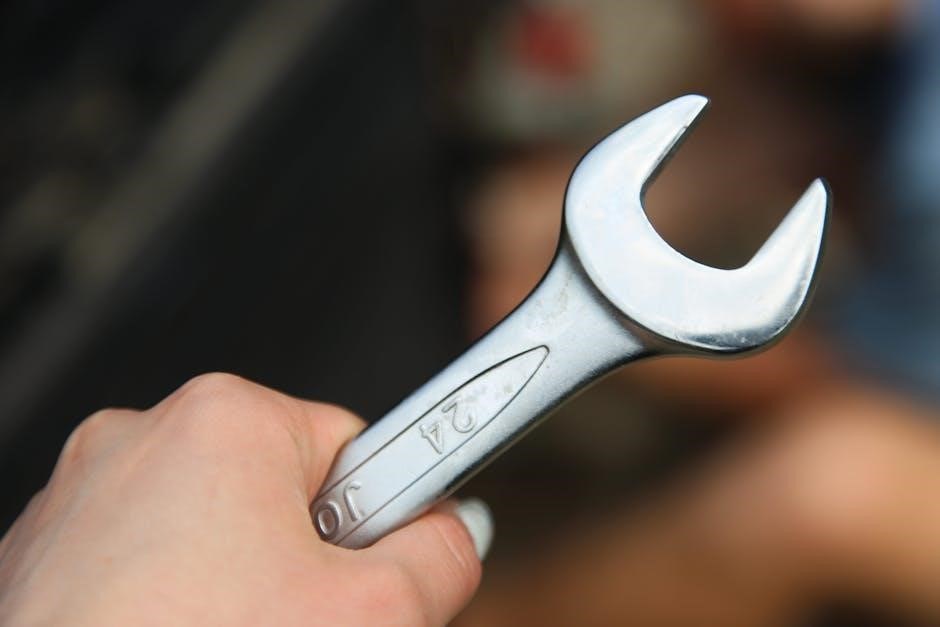
Maintenance Documentation and Compliance
This section covers the importance of accurate maintenance logging, compliance with FAA regulations, and proper documentation practices to ensure airworthiness and legal adherence.
11.1 Logging Maintenance Activities
Accurate and detailed logging of all maintenance activities is crucial for ensuring compliance and traceability. Each entry should include the date, aircraft serial number, task performed, and the technician’s signature. This ensures a clear record of all work done, aiding in future inspections and compliance checks. Digital tools can streamline this process, providing accessible and organized records. Proper logging also helps track recurring issues and verifies adherence to scheduled maintenance intervals, ultimately ensuring the aircraft’s airworthiness and operational safety.
11.2 Compliance with FAA Regulations
Adherence to Federal Aviation Regulations (FARs) is mandatory for all maintenance activities on the Cessna 172P. This includes following approved procedures, using certified parts, and documenting all work in accordance with FARs. Regular inspections and maintenance must align with the aircraft’s POH and maintenance manual. Compliance ensures airworthiness and safety, while non-compliance can lead to legal consequences and operational risks. Staying updated on regulatory changes and maintaining proper documentation are essential for meeting FAA standards and ensuring the aircraft remains flightworthy.

Troubleshooting Common Issues
This section addresses common problems such as engine performance issues and electrical malfunctions, providing diagnostic steps and solutions to ensure quick resolution and safe operation.
12.1 Engine Performance Problems
Common engine issues include rough operation, low RPM, and high oil temperature. Troubleshooting involves checking the ignition system, air filter, and carburetor. Ensure proper magneto function, as RPM drops exceeding 125 indicate problems. Inspect spark plugs for fouling and clean or replace as needed. Verify fuel flow and mixture settings, addressing any blockages. Monitor oil levels and coolers for leaks or damage. Regular maintenance, like spark plug replacement and oil changes, prevents degradation. Addressing these issues promptly ensures optimal engine performance and safety during flight operations.
12.2 Electrical System Malfunctions
Electrical system issues can manifest as flickering lights, dead batteries, or faulty avionics. Start by checking the battery voltage and charging system. Ensure circuit breakers are secure and not tripped. Inspect wiring for damage or corrosion. Test alternator output and replace if necessary. Verify all connections are tight and clean. For avionics malfunctions, consult the system’s troubleshooting guide. Regular maintenance, such as cleaning terminals and testing circuits, helps prevent electrical failures. Addressing these issues promptly ensures reliable system performance and safety during flight operations.
The Cessna 172P maintenance manual is essential for ensuring safety, efficiency, and longevity. Proper maintenance procedures guarantee reliable performance and compliance with aviation standards, safeguarding both aircraft and passengers.
13.1 Summary of Key Maintenance Practices
Regular maintenance is crucial for the Cessna 172P’s performance and safety. Key practices include oil changes, spark plug inspections, fuel system checks, and propeller maintenance. Ensure electrical and avionics systems function properly, inspect brakes and landing gear, and check control surfaces. Adhere to FAA regulations and log all activities. Address issues like engine performance problems and electrical malfunctions promptly. These practices ensure the aircraft remains airworthy, enhancing reliability and safety for all flights.
13.2 Importance of Adhering to the Manual
Adhering to the Cessna 172P maintenance manual is critical for ensuring the aircraft’s safe operation and optimal performance. Following the guidelines helps prevent mechanical failures, reduces wear and tear, and ensures compliance with aviation regulations. Regular maintenance practices outlined in the manual enhance reliability, safety, and longevity of the aircraft. It also serves as a reference for troubleshooting common issues, making it an indispensable resource for pilots and maintenance professionals. Compliance ensures the aircraft remains airworthy and ready for flight.

Additional Resources
This section provides additional resources, including recommended tools, online forums, and detailed guides. Refer to the Cessna 172P Service Manual (D2065-3-13) for comprehensive maintenance support. Stay updated with the latest aviation practices and troubleshooting tips to ensure optimal aircraft performance and safety.
14.1 Recommended Tools and Equipment
Essential tools for Cessna 172P maintenance include wrenches, screwdrivers, and pliers. Diagnostic tools like multimeters and compression testers are crucial for engine checks. Specialized equipment such as rivet guns and torque wrenches are necessary for airframe repairs. Safety gear, including gloves and goggles, is vital. Ensure all tools meet aviation standards for precision and durability. Refer to the Cessna 172P Service Manual (D2065-3-13) for a detailed list of required tools and equipment to maintain compliance with FAA regulations and ensure safe operations.
14.2 Online Communities and Forums
Engaging with online communities and forums dedicated to the Cessna 172P is invaluable for maintenance support. Platforms like AOPA and Cessna Pilot Association offer expert advice, troubleshooting tips, and shared experiences. These forums often discuss maintenance best practices, STC installations, and regulatory compliance. Additionally, they provide access to downloadable manuals, guides, and insights from experienced mechanics. Participating in these communities fosters collaboration and ensures that maintenance activities align with industry standards and FAA guidelines, enhancing overall aircraft safety and performance.
